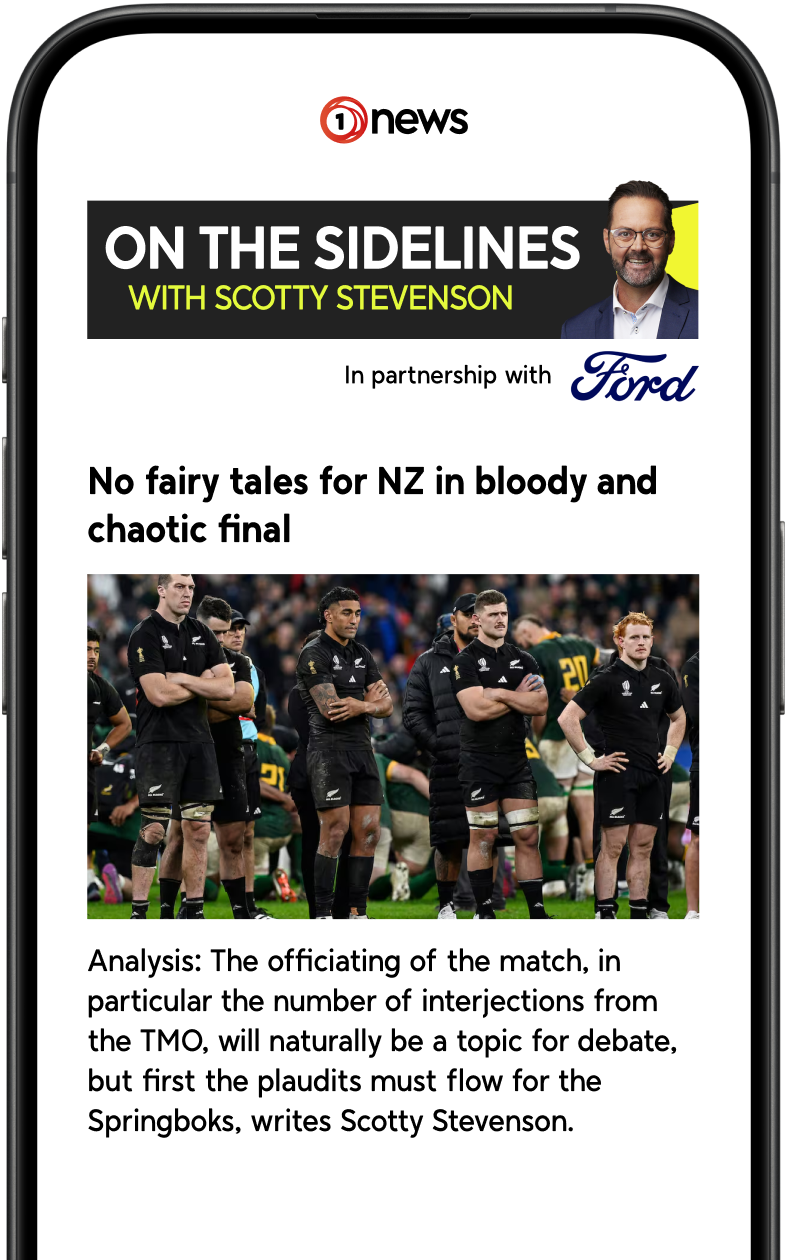Ireland will demand the best of the All Blacks in Chicago. Will Scott Robertson reward form or go back to Plan A? Patrick McKendry weighs the options.
There is a video doing the rounds on social media which is a good reminder of what defensive excellence under the highest of pressure in a Test looks like.
It is the final five minutes of the All Blacks v Ireland quarter-final at the Stade de France in 2023 and it is worth seeking out for the connectedness, discipline and utter commitment shown by Ian Foster’s men as they defend a 28-24 lead.
If you’re an All Blacks’ fan, the clip also comes with a guarantee of a win, but the courage on display as Foster’s men hold out the green tide in the knowledge that a penalty would result in a lineout 5m from the line and inevitable driving maul (and, given Ireland’s effectiveness there, a probable try) never ceases to amaze.
Depending on your loyalties, Sam Whitelock's steal to win the penalty and confirm his team’s progress into the semifinal two minutes after the fulltime siren was either a moment of devastation or blessed relief but, either way, the accuracy and effort on display from both teams was extraordinary.
The Test is a good reminder of where the All Blacks, several of whom retired from international duty after the World Cup, got to under Foster. And how hard they were to break down – in contrast to today in the aftermath of the side’s defensive humiliation at the hands of the Springboks in Wellington.
It is also a good reminder of New Zealand’s rivalry against Ireland, which will be renewed at Chicago’s Soldier Field on November 2 NZT.
The All Blacks’ victory was a revenge of sorts after Ireland won the three-Test series in New Zealand the year before and extended a remarkable failure by the men in green to make the knockout stages of a World Cup.
Scott Robertson, who succeeded Foster last year, had his own success against Ireland last November when his side won 23-13 at Dublin’s Aviva Stadium in a Test even after he was forced into a change at first-five, with Damian McKenzie taking the reins due to the unavailability of Beauden Barrett, who had suffered a head injury a week earlier.
McKenzie did well, as did centre Rieko Ioane, the latter leading the haka and taking great delight in living up to his “Public Enemy No.1” title following his alleged comments to Ireland’s players, including controversial No.10 Johnny Sexton, after the quarter-final in Paris.
But, three weeks out from the Test against the Irish at Soldier Field, it is highly doubtful that either will start. In the case of Ioane, he may not even make the match-day squad.
Beauden Barrett, if fully recovered from the shoulder injury which kept him out of the recent Perth Test, will come back to the No.10 jersey, with McKenzie going back to the reserves bench.
Interestingly, while McKenzie struggled to find his rhythm in a position he has hardly played this year, second-five Jordie Barrett flourished in his elder brother's absence.
Whether by accident or design, Jordie took on extra attacking responsibilities against the Wallabies that in turn allowed centre Quinn Tupaea to shine in a relatively unfamiliar position, and there will be intrigue in the wearer of the No.13 jersey against Ireland after Tupaea's success.

However, given the investment the selectors have put into Billy Proctor this year, it would surprise if the Hurricanes player is not backed again in Chicago. Robertson was reluctant to sing Tupaea's praises too loudly afterwards – another potential insight into the midfield pecking order.
Ioane, seen as a left wing this year until a cameo at centre when replacing Tupaea against the Wallabies, will find it hard to dislodge Caleb Clarke or Leicester Fainga’anuku for that No.11 jersey. Indeed, it would seem harsh to leave Tupaea out completely after he performed so well last time out.
Have the selectors painted themselves into a corner here? Tupaea added a cut and thrust in the midfield that Proctor has not consistently managed this year but he may not hold out hope for much more than a place on the bench. That selection alone will be a big test of the coaches' flexibility.
It could be argued two other most contestable positions are left wing and No.8.
Clarke was good against the Wallabies at Eden Park before limping off with an ankle injury and Fainga’anuku was his usual busy and impactful self in his first Test in two years. Either could get the nod.
The selectors will need to weigh up form when considering No.8, too. Peter Lakai was good in a rare start against the Wallabies in Western Australia, with Wallace Sititi, who has not been in the form that won him World Rugby’s breakout player award last year, a potentially better impact player.
Robertson and the selectors rewarded experience in selecting their 36-man squad this week. Will they do so again for the first match of the tour or focus on form as they attempt to reach the standards against Ireland set by Foster's men two years ago?
Possible All Blacks squad for Test against Ireland
1. Ethan de Groot, 2. Codie Taylor, 3. Fletcher Newell, 4. Scott Barrett ©, 5. Fabian Holland, 6. Simon Parker, 7. Ardie Savea, 8. Peter Lakai, 9. Cam Roigard, 10. Beauden Barrett, 11. Caleb Clarke/Leicester Fainga'anuku, 12. Jordie Barrett, 13. Billy Proctor, 14. Leroy Carter, 15. Will Jordan. Reserves: 16. Samisoni Taukei’aho, 17. Tamaiti Williams, 18. Pasilio Tosi, 19. Josh Lord, 20. Wallace Sititi, 21. Cortez Ratima, 22. Quinn Tupaea, 23. Damian McKenzie.























SHARE ME